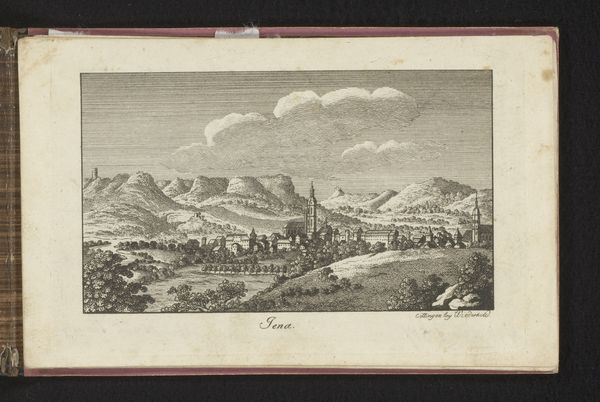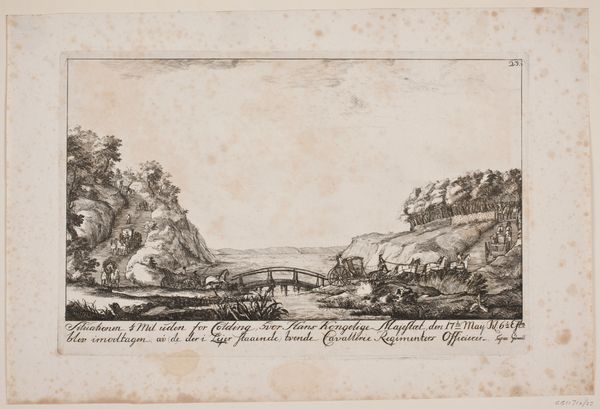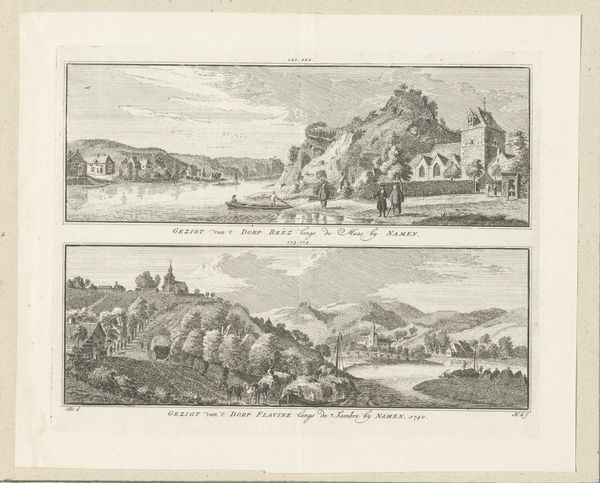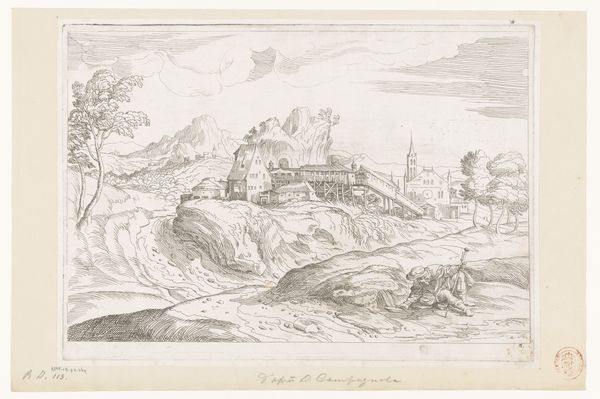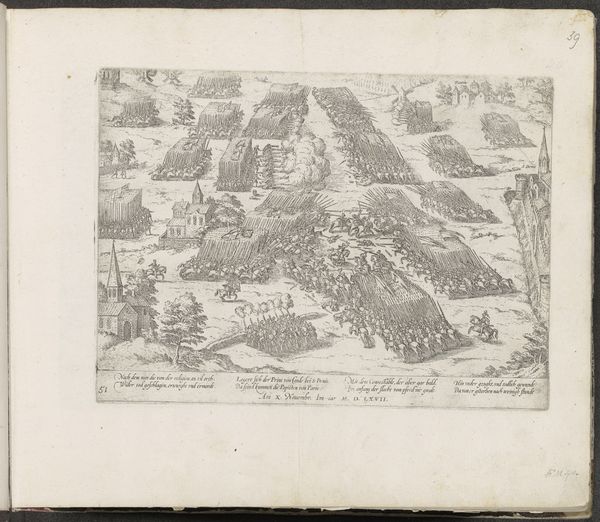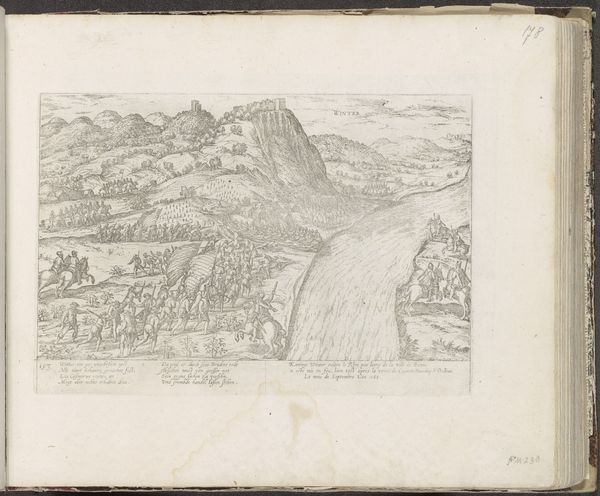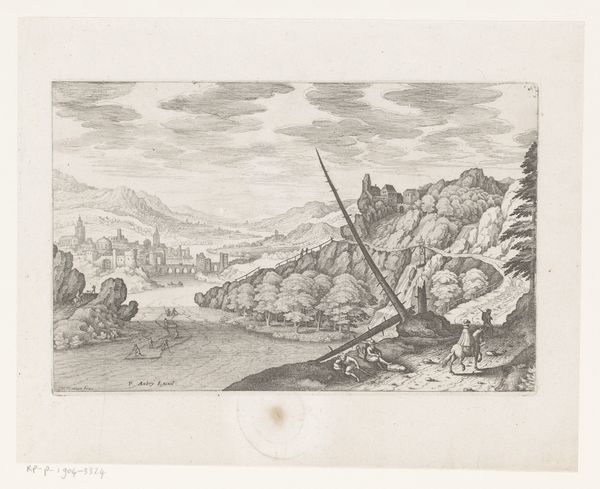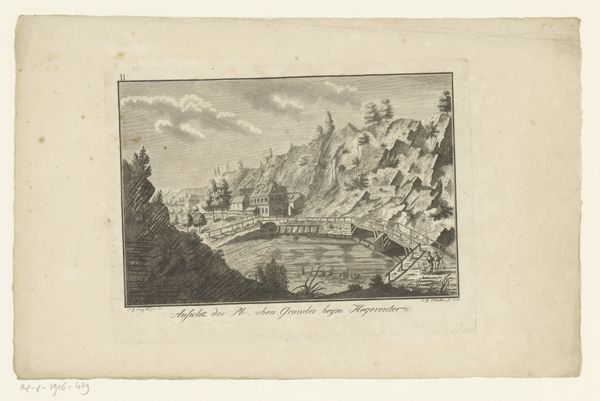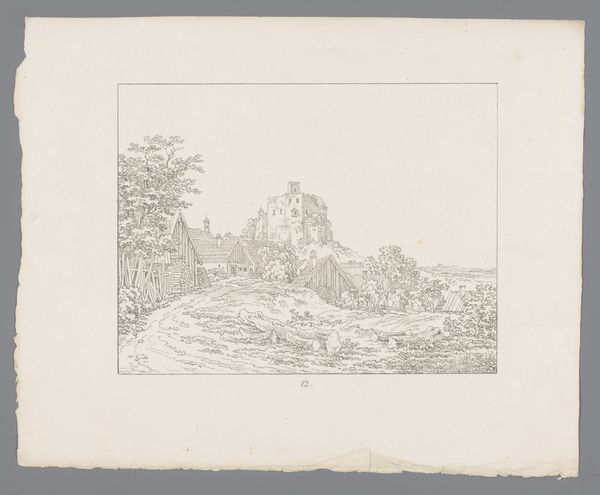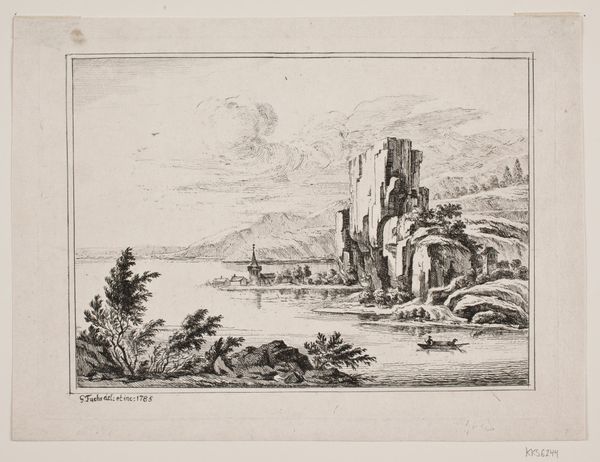
Gezicht op de rivier Werra en de kastelen Hanstein en Ludwigstein Possibly 1770 - 1817
0:00
0:00
drawing, paper, ink, engraving
#
drawing
#
sketch book
#
landscape
#
paper
#
ink
#
coloured pencil
#
romanticism
#
pen-ink sketch
#
pen and pencil
#
line
#
pen work
#
cityscape
#
engraving
#
realism
Dimensions: height 105 mm, width 171 mm
Copyright: Rijks Museum: Open Domain
Curator: What a captivating vista. This artwork, rendered in ink and engraving, is titled “Gezicht op de rivier Werra en de kastelen Hanstein en Ludwigstein." The artist is anonymous, and we believe it was created sometime between 1770 and 1817. Editor: It feels so orderly, doesn't it? Like a carefully constructed stage set. Those castles perched on the hills, each asserting its dominion over the landscape. It almost has a fairy-tale quality to it. Curator: Indeed. Castles themselves carry such potent symbolism. Throughout history, they represented power, authority, and control, becoming emblems of social hierarchies. It is fascinating to me how the artist renders the two castles; both sit upon their hills, but they have clearly different forms. Perhaps they are meant to stand as symbolic opposites in some way. Editor: Or perhaps reflect real historical rivalries or alliances! Consider the role of landscape in defining national identity in that era. Were images like this intended to evoke a sense of pride, ownership, maybe even a little romantic yearning for a picturesque past? Curator: Undoubtedly. The picturesque aesthetic sought to find beauty in a harmonious, often idealized, view of nature. This connects strongly to how cultural memory uses such archetypes as castles to imbue specific geographic regions with symbolic weight. Think of the associations conjured—nobility, chivalry, even the gothic. Editor: And consider how the act of depiction itself shapes perceptions. Engravings like this one could circulate widely, standardizing an idea of “German-ness" across a diverse public. It's not just about representing a real place; it’s about crafting a shared visual language. Did ownership of images or printed material provide access to political movements and their formation? Curator: A vital point. As an Iconographer, I always look for the echoes of inherited meaning. The visual rhetoric present invites its audience into a complex system of signification that has persisted and mutated through time. That these symbolic echoes shape cultural perceptions seems inescapable. Editor: In essence, this seemingly straightforward landscape operates on multiple levels. It’s a record, a projection, and a carefully curated statement about power, place, and identity. Thanks for pointing out such rich points for thought and discourse. Curator: The pleasure was all mine.
Comments
No comments
Be the first to comment and join the conversation on the ultimate creative platform.
